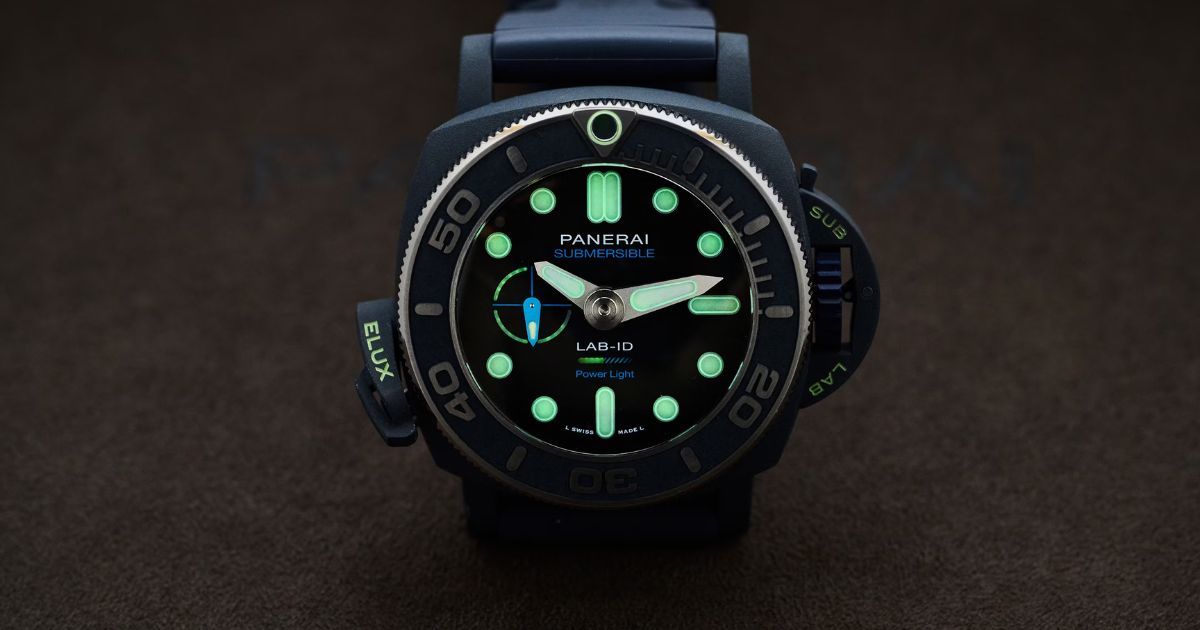Our Magazine
Understanding Lume: The Secret Glow of Your Watch Dial

There’s a moment every watch lover knows intimately. You step from a brightly lit room into a dimly lit corridor, or you wake in the dead of night, and there it is. A soft, ethereal glow emanates from your wrist. The hands, the indices, perhaps even the bezel, are all illuminated in a cool green or blue light, silently marking the passage of time. This isn’t magic, though it feels like it. This is the art and science of luminescence, or as we affectionately call it in the watch community, lume.
For the uninitiated, lume might seem like a simple, functional feature. But for us, it’s a world of chemistry, craftsmanship, and a touch of secret sauce that separates the good from the truly exceptional. It’s the feature that transforms a watch from a fair-weather friend into a round-the-clock companion. So, let’s pull back the curtain and dive deep into the captivating glow of your watch dial.
The "Why": More Than Just a Party Trick
Before we get to the “how,” let’s appreciate the “why.” The primary purpose of lume is, of course, legibility in low-light conditions. For a tool watch—be it a diver navigating the murky depths, a pilot checking the time in a darkened cockpit, or a soldier on a night operation—this is a critical, non-negotiable feature. It can be, quite literally, a lifesaver.
But even for those of us whose deepest dive is into a swimming pool, lume holds a special charm. It represents a watch’s dedication to functionality and utility. A well-lumed watch is a prepared watch. It’s a detail that shows the manufacturer cared enough to ensure their creation would be readable in any situation. Furthermore, that initial, brilliant charge of light, followed by the long, slow fade throughout the night, creates a unique, personal connection with the watch. It’s a private performance, just for you.
A Brief History: From Radium to Super-LumiNova
The story of lume is a fascinating journey of innovation, tinged with a dark and dangerous past.
1. The Radium Era (Early 1900s – 1960s)
The first widespread luminescent material was Radium. In the early 20th century, watch companies discovered that by mixing radium with a phosphorescent zinc sulfide compound, they could create a paint that glowed continuously without needing to be “charged” by a light source. The women, famously known as the “Radium Girls,” who painted these dials, were instructed to point their brushes with their lips, leading to horrific consequences. The dangers of radioactivity were not fully understood at the time. While Radium dials glowed brilliantly and consistently, the alpha particles emitted by the radium would eventually degrade the zinc sulfide, causing it to turn a dark brown and lose its luminescent properties over decades. Today, vintage watches with their original “radium burn” are a testament to this perilous chapter.
2. The Tritium Transition (1960s – 1990s)
As the dangers of radioactivity became clear, the industry sought a safer alternative. Enter Tritium. Tritium is a radioactive isotope of hydrogen, but it emits much weaker beta particles, which are unable to penetrate human skin. While it still required a radioactive symbol on the dial (a “T” or “T<25”), it was far safer. However, unlike Radium, Tritium does not excite the phosphor on its own; it needs to be combined with it in a sealed glass tube. You’ll see this on many vintage and some modern watches as “T<25” on the dial. Tritium has a half-life of about 12.5 years, meaning its brightness will noticeably diminish over a couple of decades. Many vintage watches from the 70s and 80s now have lume that no longer glows, a quiet retirement after years of service.
3. The Modern Age: Non-Radioactive Photoluminescence (1990s – Present)
Today, the vast majority of watches use non-radioactive photoluminescent materials. The most famous name in this field is Super-LumiNova, a strontium aluminate-based pigment. Its principle is simple but effective: it absorbs light (both natural and artificial) and then re-emits it as a visible glow. Think of it like a sponge for light; the more light you “charge” it with, the brighter and longer it will glow.
The beauty of modern lume is its safety, brightness, and versatility. It can be applied in various colors, though green (especially C1 and C3) remains the most common due to the human eye’s peak sensitivity in the green part of the spectrum, making it appear brightest. Blue (C7/C9) is also popular, famously used by brands like Rolex on their Chromalight display. Other colors like orange, yellow, and blue are possible but are generally less efficient and don’t last as long.
Beyond Super-LumiNova: LumiNova, NoctiLuca, and Tritium Tubes
While Super-LumiNova is the industry standard, it’s not the only player.
-
LumiBrite is Seiko’s proprietary photoluminescent material, renowned for being exceptionally bright and long-lasting. Grand Seiko’s lume is a particular point of pride for the brand.
-
Breitling’s Super-LumiNova is often a grade above standard, used extensively in their professional dive watches like the Superocean.
-
NoctiLuca is a material used by some microbrands, known for its vintage-looking, creamy appearance in daylight and a strong green glow.
Perhaps the most fascinating modern development is the return of Tritium in a new, safer form. Companies like Ball Watch and Marathon use Tritium Gas Tubes (GTLS – Gaseous Tritium Light Source). These are tiny, sealed glass tubes filled with tritium gas, coated on the inside with a phosphor. The beta particles from the tritium excite the phosphor, causing a constant, unwavering glow that requires no charging and lasts for decades (aligned with Tritium’s half-life). This is the ultimate set-and-forget lume, always ready, day or night.
The Art of Application: It's Not Just What, But How
The quality of lume isn’t just about the compound used; it’s about how it’s applied. This is where craftsmanship truly shines.
-
Painted Lume: The most common method, where the lume is mixed into a paste and carefully painted onto the hands and hour markers. The thickness and evenness of the application dramatically affect the brightness and duration.
-
Lume Baked onto Ceramic Bezels: For dive watches with ceramic bezels, the lume is often applied as a liquid and then fired at a high temperature, fusing it permanently into the ceramic. This is a complex process but results in incredibly durable lumed bezel inserts.
-
Lume Blocks and Inlays: Higher-end watches often use solid blocks of lume material that are inserted into the hands and indices. These three-dimensional blocks can hold a massive amount of lume, resulting in a “lume bomb” effect that is spectacularly bright and long-lasting.
The final test of a great lume job is its uniformity. In a dark room, the glow from all the indices and hands should be even and consistent. A patchy or dim index can be a sign of poor application, detracting from both the aesthetics and functionality.
Caring for Your Watch's Glow
Modern lume is remarkably durable, but it’s not indestructible. It can be degraded by prolonged exposure to direct, strong UV light, much like the sun can fade furniture. While a day at the beach won’t kill it, years of such exposure can diminish its performance. The best way to care for it is simply to wear and enjoy your watch. The regular charge from ambient light is all it needs to perform its nightly duty.
The Secret Glow
In the end, lume is one of the most enchanting details of a fine timepiece. It connects us to a rich, if sometimes hazardous, history. It showcases the brand’s commitment to functionality through advanced chemistry and meticulous craftsmanship. And it provides a private, beautiful interaction with your watch that only you are privy to.
So, the next time you find yourself in the dark, take a moment to appreciate that soft, persistent glow on your wrist. It’s more than just paint; it’s the soul of your watch, shining through.













